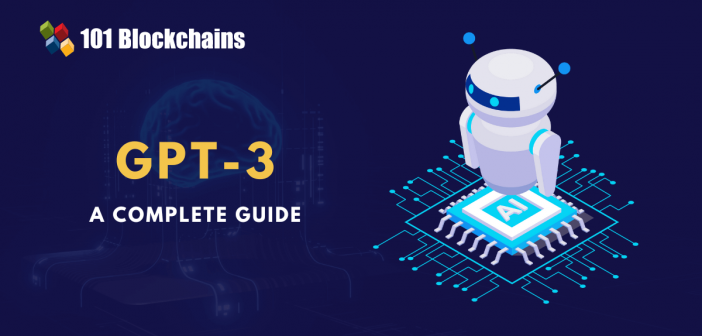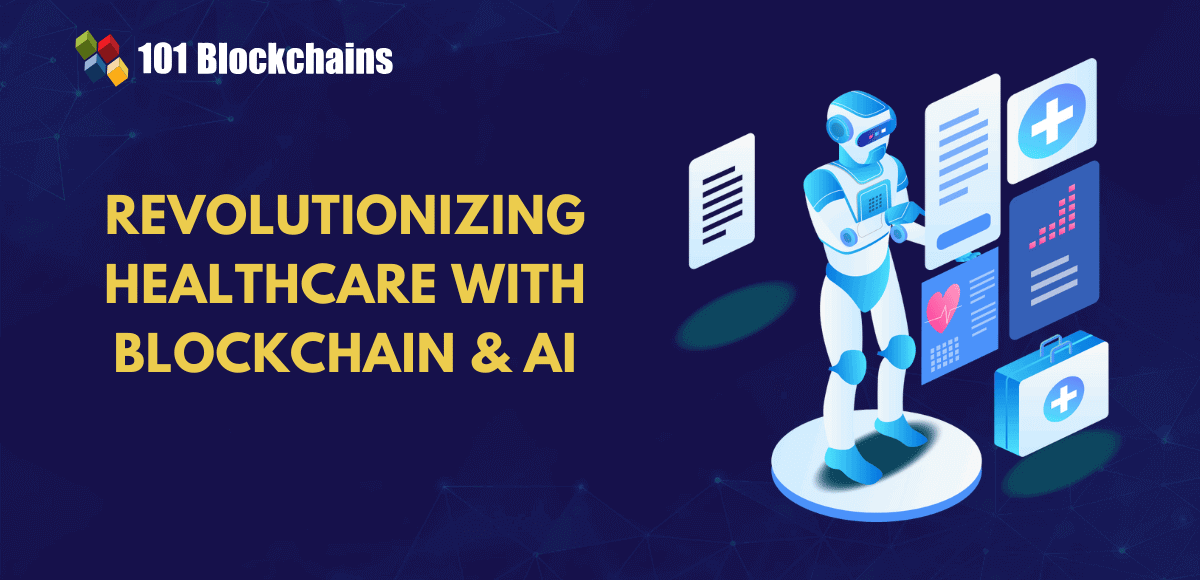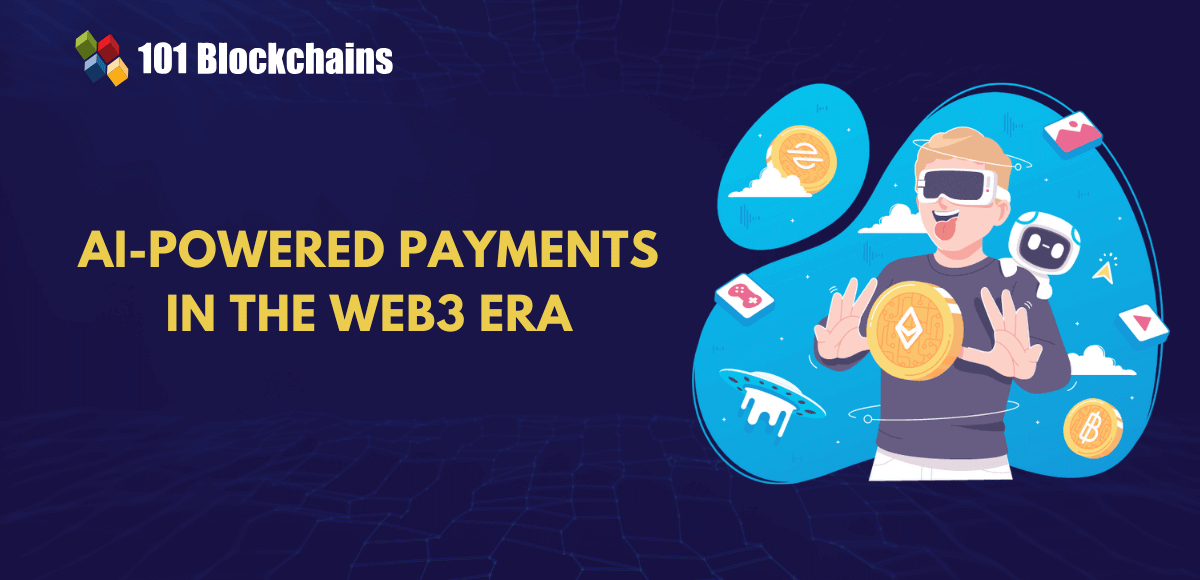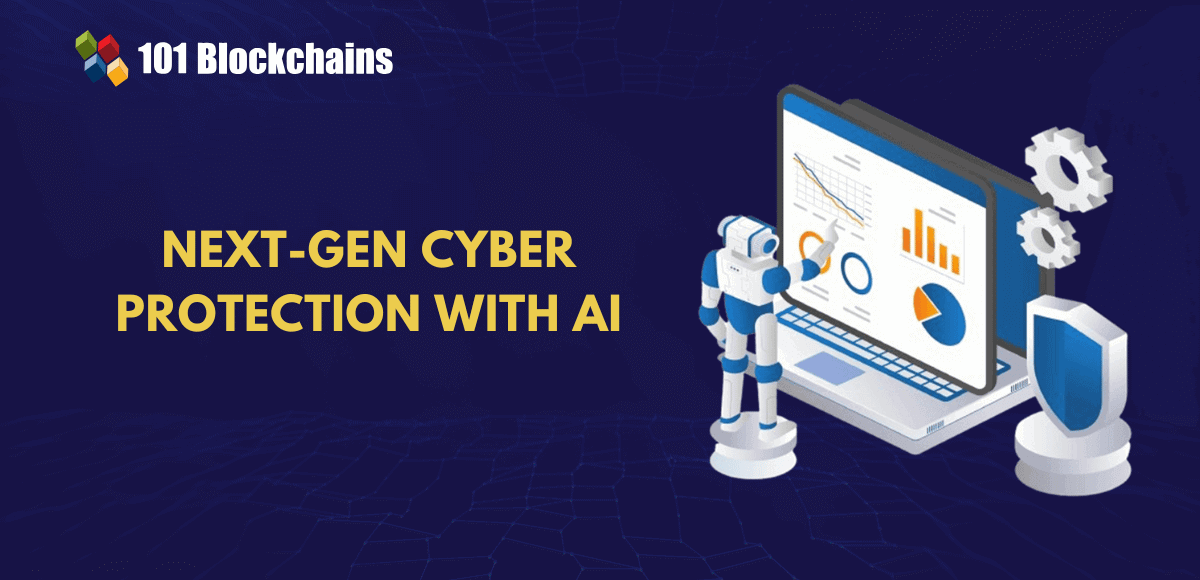Learn how blockchain truly works, master key definitions, and uncover what makes smart contracts so "smart." Dive into the fundamentals, gain valuable insights, and start your blockchain journey today!

- AI & ChatGPT
James Howell
- on July 13, 2023
A Complete Guide to GPT-3
GPT-3 is one of the miraculous inventions which have emerged from the power of AI. It has created a lot of hype on the internet, as users want to explore the powerful functions of GPT-3. However, the adoption of the tool in business use cases has created the need to learn GPT3, as it could open up roads for career development. It is an AI language model which has captured the attention of the tech community with some exclusive value advantages.
Following the first stage of its release in 2020, developers have come up with multiple innovative use cases for GPT-3. OpenAI, a leading pioneer in the domain of AI R&D, has created GPT-3, which creates more curiosity about its potential. The following post offers a detailed introduction to GPT-3 and how it works.
What is GPT-3?
One of the first highlights in an introduction to GPT-3 would focus on its definition. The most important theme in the fundamentals of GPT-3 explained for beginners would be Natural Language Processing or NLP. Natural Language Processing helps computers in processing human language through text or voice data. Most important of all, NLP aims at understanding the sentiment and intent of the writer, thereby improving semantic understanding. It has the potential to drive important AI innovations, and GPT-3 is one of the promising examples of the same.
The general description of GPT-3 paints it as a large language model. On the other hand, you can come across GPT 3 examples which define it as a big step in achieving Artificial General Intelligence. It is also important to note that GPT-3 has become one of the most popular AI models, with the flexibility for performing a wide range of general tasks. Initially, GPT-3 was available as an API for offering access to a powerful AI language model.
Prior to GPT-3, the primary objective of language models focused on addressing only tasks with Natural Language Processing. Language models could only work on text generation, classification, or summarization. GPT-3 changed the narrative and showed how AI-powered language models could address multiple NLP tasks. GPT stands for Generative Pre-trained Transformer, and you can understand the basics of GPT-3 by unraveling the meaning of each term.
- Generative models refer to a statistical model which can help in generating new data points. You can find answers to how GPT 3 works by identifying its capabilities for learning the relationship between variables in a dataset.
- Pre-trained models refer to the models which have been trained with a large dataset. As a result, users don’t have to invest efforts in training the model from scratch, thereby saving costs.
- The final highlight among the components of GPT-3 refers to the transformer model. It suggests the use of a deep learning model used for managing sequential data. On top of it, transformer models can help with tasks like text classification and machine translation.
Want to develop the skill in ChatGPT to familiarize yourself with the AI language model? Enroll now in ChatGPT Fundamentals Course
Understanding Large Language Models
After clearing doubts such as “Is GPT3 available to download?” you need to turn back to the fundamentals of GPT3 to understand how it works. Natural Language Processing, or NLP, has gained massive attention in recent times, especially with the development of large language models or LLMs.
Large language models have the advantage of training with large amounts of text, which makes them eligible for multiple language-based tasks. Language modeling primarily involves the use of probability to understand the connection between sentences in a specific language. Simple language models can take a word and predict the next sequence of words based on their analysis of existing text sequences. You must notice the importance of training the GPT-3 language model with multiple data sets to ensure accurate predictions.
The definition of GPT-3 explained with comprehensive insights serves as another highlight about its working as a statistical prediction machine. It takes text as the input and offers predictions as the output, just like the autocomplete feature in smartphones. The success of large language models depends on the availability of massive volumes of training data. In addition, GPUs have also joined in the working of GPT3, thereby improving the speed of training. On top of it, LLMs have been achieving success on the basis of abilities to understand the dependencies between words.
GPT-3 can deliver the advantage of accuracy in the results of different NLP tasks with the power of a massive dataset. Most important of all, GPT-3 can complete many NLP tasks within zero-shot environments without the need to provide example data.
Want to learn about the fundamentals of AI and Fintech, Enroll now in AI And Fintech Masterclass
Working of GPT-3
The fundamentals of GPT-3 and its identity as a large language model create curiosity regarding the working of the language model. You must be wondering about the components which ensure that GPT-3 delivers the desired results in predictions. Any GPT-3 tutorial would help you identify how a language model is the heart of operations of GPT-3.
Language models like GPT-3 use NLP, an innovative component in artificial intelligence, which can program computers to respond like humans. Natural Language Processing primarily emphasizes the communication between computers and human users with semantic improvements.
The architecture of GPT-3 includes four models powered by OpenAI, with each model featuring distinct capabilities to address specific tasks. The four models in GPT-3 have been named after pioneers in the field of technology, such as Da Vinci, Curie, Ada Lovelace, and Charles Babbage. One of the major aspects in favor of GPT-3 is the fact that it is more advanced than other NLP models. It includes 175 billion parameters, thereby making its knowledge base around 10 times larger than its predecessors.
Another noticeable highlight in responses to “How does GPT 3 work” would refer to the assurance of human-like accuracy. NLP models before GPT-3 prioritized fine-tuning, thereby leading to setbacks in reading comprehension, question answering, and filling in the blanks. GPT-3 has successfully addressed the setbacks of its predecessors for becoming one of the most powerful language processing models.
Take your first step towards learning about artificial intelligence with all the definitions of important AI concepts and terms with simple AI Flashcards.
Value Advantages of GPT-3
The role of GPT-3 in transforming different sectors, such as programming and content generation, has emerged as one of its notable value advantages. It is a major tool for development in modern technology and provides opportunities for streamlining communication. Beginners wondering about questions such as “Is GPT3 available to download?” should take note of the different areas it can improve.
The different use cases of GPT-3 include content creation, generation of new ideas, translation or comprehension of content in simple terms, and other text-related tasks. Interestingly, GPT-3 also presents a notable value advantage in coding and app design. Here is an outline of some of the noticeable advantages of GPT-3.
-
Content Generation
The foremost advantage of GPT-3 in the digital world revolves around its ability to generate content. It uses NLP for the analysis of text and understanding the underlying semantics, alongside creating a text which appears like human responses. You should also notice that GPT 3 examples in text generation can serve as the foundations for future real-time communication systems. The common cases of text generation with GPT-3 include chatbots, customer service, language translation, and virtual assistants.
GPT-3 can help in generating natural human-like responses to the queries of customers for offering customer service. It can help businesses generate instant responses to customer queries which appear just like the responses of a customer support executive.
GPT-3 is fast at predictions, and businesses can use them for real-time interactions in customer service with reduced response times. On top of it, a GPT-3 tutorial would also showcase how businesses can utilize its next-generation capabilities. For example, it can help in creating different content assets such as video scripts, blog posts, and social media posts.
GPT-3 produces content in a few seconds based on the inputs. Therefore, brands could explore effective ways to save time and resources on the content creation process.
Identify new ways to leverage the full potential of generative AI in business use cases and become an expert in generative AI technologies with Generative AI Skill Path
-
Versatility
The second noticeable advantage in GPT-3 points at the massive data set for training the language model. Therefore, it can guarantee versatility for applications in a wide range of tasks beyond text generation. The review of answers for “How does GPT 3 work” can showcase a brief impression of how GPT3 serves multiple NLP tasks.
It can serve as a valuable asset for other use cases, such as programming. Developers can use GPT-3 to uncover the secrets to integrating NLP in their applications. On the other hand, GPT-3 can also generate complex code, albeit with the need for correct inputs and prompting.
Most important of all, you should note that GPT-3 is not a programming expert. It is a language model which learns from multiple datasets. GPT-3 is powerful and can generate lines of code for complex tasks according to your instructions. However, you need to verify the code manually to identify bugs and whether it provides the desired functionality.
If you want to find answers to “Is GPT-3 available to download?” you must note that you can access it through an API. As a result, it can guarantee easier integration of GPT-3 in applications. Developers can rely on the functionalities of GPT-3 for creating NLP features within their applications. Therefore, developers can add modern functionalities which can guarantee better user satisfaction with the help of GPT-3.
-
Resource Savings
The most important resources in the existing world are time and money. You can notice a prominent aspect in the details of GPT-3 explained till now. It is the speed of GPT-3. GPT-3 can provide a tool for saving time on complex tasks such as the analysis of large datasets.
Therefore, organizations can look up to GPT-3 as an essential resource for supporting the current practices of an organization. Interestingly, the savings in time can also help in saving costs, which offers a crucial point of consideration. Organizations can use the resources saved with GPT-3 to support other areas of the business to achieve desired results.
Want to understand the importance of ethics in AI, ethical frameworks, principles, and challenges? Enroll now in the Ethics Of Artificial Intelligence (AI) Course
Does GPT-3 Have Any Limitations?
The discussions on GPT 3 examples, such as Copy.ai, prove the presence of limitations in GPT-3. It is undoubtedly a valuable natural language processing tool, albeit with the limitations of bias and memory. Here are some of the prominent limitations you can find in GPT-3.
-
Bias
The biggest setback of GPT-3 explained for beginners would point to bias in training the model. GPT-3 delivers predictions according to the datasets it uses for training. For example, if the data trains the model suggests that 2 is less than 1, then it would most likely appear in all predictions involving 2 and 1.
The simple example points out a larger flaw in the design of the language model. It is important to note that bias could lead to harm when it has been targeted specifically for negative purposes. Therefore, it is important to double-check everything generated by GPT-3 for accuracy and informed decision-making.
-
Memory
The next limitation of GPT-3 refers to the fact that it does not have long-term memory. It could not retain information from each interaction and has been tailored for facilitating ongoing conversations. As a result, it can lead to problems in use cases involving continuously changing tasks.
For example, GPT-3 would not retain memories of the interaction it has with customers while serving customer support use cases. Each interaction of GPT-3 is independent of the previous one, thereby creating discrepancies in user experience.
Another prominent setback associated with GPT-3 is the slower inference time with limitations on the length of input text. Transformer architecture in GPT-3 features limited input size, which suggests that specific applications could not use the AI language model.
Excited to learn the fundamentals of AI applications in business? Enroll now in the AI For Business Course
Conclusion
The outline of GPT-3 basics and its working provide an explanation for its popularity. GPT-3 is a large language model based on AI and offers the functionalities of Natural Language Processing. You can find a reliable GPT-3 tutorial and uncover more information about examples of its use cases.
The advantages of GPT-3 have the potential to take the language model to new heights in the future of the technological revolution. On the other hand, users must also keep an eye on the limitations of GPT-3 to achieve its true potential. Learn more about GPT-3 with some of the popular examples of its use cases right now.






